Developers know Python as an interpreted, dynamically-typed, and high-level programming language. It is simple, easy to learn, and famous for its unique syntax that makes Python different from other languages.
By the way, we’ve recently posted some brief comparisons of Python with other languages, for example, Java vs Python or PHP vs Python. Reading these posts, you will get more beneficial facts about it.

To start development with Python language, you will need a specific framework to code. What are all these frameworks? Which is the best framework for Python? After all, what are these frameworks in programming about? You’ll be surprised, but these questions are rather typical.
If you are here, you most likely have some fundamental programming skills and just want to find some starting points to investigate a specific framework. In this post, we will briefly describe the most commonly used Python frameworks in 2020. Let’s get started!

Contents
What are the Best Python Frameworks?
Django
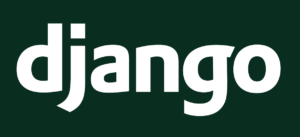
Django is a free open-source Python framework that is now gaining popularity rapidly. It contributes to accelerated web application development with a practical and reasonable structure. Django enables developers to make web apps according to the most recent patterns. You get numerous gatherings of libraries able to help developers with sitemap URL directing, client validation, and database blueprint relocation.
Django encourages the reusability of parts. Thanks to its remarkable highlights, this Python framework is broadly used to build sites that can deal with gigantic traffic. All of you know the popularity of Instagram and Pinterest – these social networks were created right with the help of the Django framework.
The core databases that Django works with are MySQL, PostgreSQL, SQLite, and Oracle. However, third-party drivers allow using others as well.
This year, the community of Django is planning to release even more libraries. Using this framework, you will be able to craft any web application from a small-scale project to a complex site.
Flask

Flask is accessible under the BSD license (that is inspired by the Sinatra Ruby framework). This Python framework relies upon the Werkzeug WSGI toolbox and Jinja2 template. Its main goal is to help develop a solid web app base. It is named as a micro framework as it does not have such elements as specific tools and libraries, database abstraction layer, form validation, etc.
Unlike Django, Flask looks more appropriate for little and simple activities.
Dive deeper into the details of comprising Django and Flask, reading one of our previous articles – Flask vs Django.
Flask was designed for apps that are open-ended, although developers can build backend frameworks any way they need. Let’s remind of some social media again, as some of them have used Flask. For example, LinkedIn or Pinterest.
CherryPy
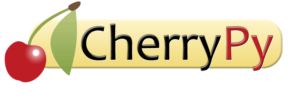
CherryPy that is almost on the verge of its tenth anniversary can be proud of its reliable, quick, and stable assistance. This open-source Python framework embeds its own multi-hung server and is able to run on any working framework that supports Python.
Thanks to the moderate web framework, developers can use any kind of technology for data access, templating, etc. It takes care of sessions, file uploads, static, cookies, and so on and so forth.
Developers who work with CherryPy can make web apps similarly they would create any other object-oriented Python program. This leads to the development of smaller source code in less time.
Pyramid
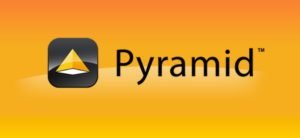
The full-stack solution called Pyramid is another driving Python framework. The goal of this open-source Python solution is to do as much as possible with minimum complexity.
Pyramid keeps up with essential tech improvements, running on Python 3, and its popularity is progressively growing. The flexible Pyramid framework allows developing basic web applications via a minimalistic approach.
Thanks to its straightforwardness and conscious quality, Pyramid is often chosen by experienced Python developers. It provides increased safety efforts to set up and screen access control records. Among the active Pyramid users, you may find such tech giants as Mozilla, Dropbox, and Yelp.
Web2Py

Web2py is a scalable cross-platform framework also written in Python programming language. This open-source and free-to-use framework was released in 2007.
Web2Py comes to handling data and it was originally offered as a handy tool focused on ease of use. That’s why there are no project-level configuration files.
The framework enables developers to create dynamic web content in Python, using a code editor, debugger, and deployment tool for developing and debugging code, as well as testing and maintaining various apps. One of the core components of Web2py is a ticketing framework that issues a ticket when a mistake comes. It encourages a client to follow the mistake and its status.
Bottle
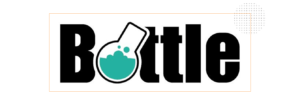
Bottle is another robust microframework that is famous as an easy-to-use lightweight tool generally used to create small web applications. The framework has no other dependency than Python Standard Library and creates a single source file of every project or app.
Bottle’s functionality includes wide templating, directing, utilities, and some fundamental abstraction over the WSGI standard. The essential point about the framework is that it enables developers to work closer to the hardware. It actually allows building simplistic personal-use apps and provides an appropriate space for learning frameworks and prototyping. By the way, Netflix has used Bottle for its web interfaces.
Grok
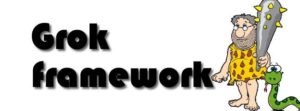
Grok is a web framework based on Zope toolkit technology. It provides development teams with an advanced Agile development experience by concentrating on two main principles:
- Convention over configuration
- Don’t Repeat Yourself (DRY)
This Python open-source solution is aimed to boost the application development process. A wide range of networks and independent libraries are available here.
Grok proposes a strong basis for developing extensible web apps and provides integrated security to ensure your application and grant access to specific users.
TurboGears

Another reliable open-source, data-driven full-stack web app framework is TurboGears. It is built on numerous middleware and different libraries. The framework was initially designed to combine the best components of other Python frameworks. It allows beginning developing web applications with an insignificant setup.
With its help, you can quickly develop extensible data-driven web applications, using its handy templating engine and a flexible ORM. TurboGears also provides strong support for aggregates and reusable snippets. Such organizations as SourceForge, Bisque, and ShowMeDo are proud of using TurboGears.
Tornado

Tornado web application framework was initially developed for a company named FriendFeed that was later taken over by Facebook. This is a powerful open-source framework widely known for its high performance. It uses non-blocking network I/O and can handle more than 10K connections at a single time.
Tornado proposes an asynchronous networking library focused on speed and handling large volumes of traffic (that is immediately clear from the name itself). It is generally used for building apps requiring high performance and tens of thousands of concurrent users.
Hug
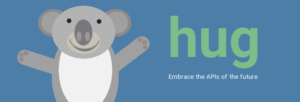
This Python 3 API framework was designed to allow software engineers to develop an API once and then reuse it whenever needed.
Hug significantly simplifies API development by offering different interfaces. That’s why it is called one of the fastest frameworks in Python 3.
Choosing Hug, you’ll be able to enjoy built-in version management and support for automatic documentation, use annotation-powered validation, and many more. The tool contains as few integrations and as little code as possible. However, it remains functional and provides reliable performance.
Dash

Dash is a smaller scale framework that should be perfectly suited for information researchers.
The framework can be modified according to the prerequisites. It provides a basic interface to UI controls (for example, sliders, diagrams, and dropdowns).
Among the key features of Dash, we can highlight mistakes dealing with Dash Deployment Server, LDAP joining, module support, straightforward interface, and URL directing.

Final thoughts
You may say that there are some more Python web development frameworks that are in-demand nowadays. Perhaps, they will evolve and grow in popularity in the coming years. All of them have their own advantages and drawbacks.
It’s quite logical that every Python developer has own preferences and different coding styles. He will assess every framework concerning the requirements of every single task. That’s why the final choice highly depends on the developer and the task at hand. What is your favorite Python framework? Please, share your thoughts in the comments section given below.





